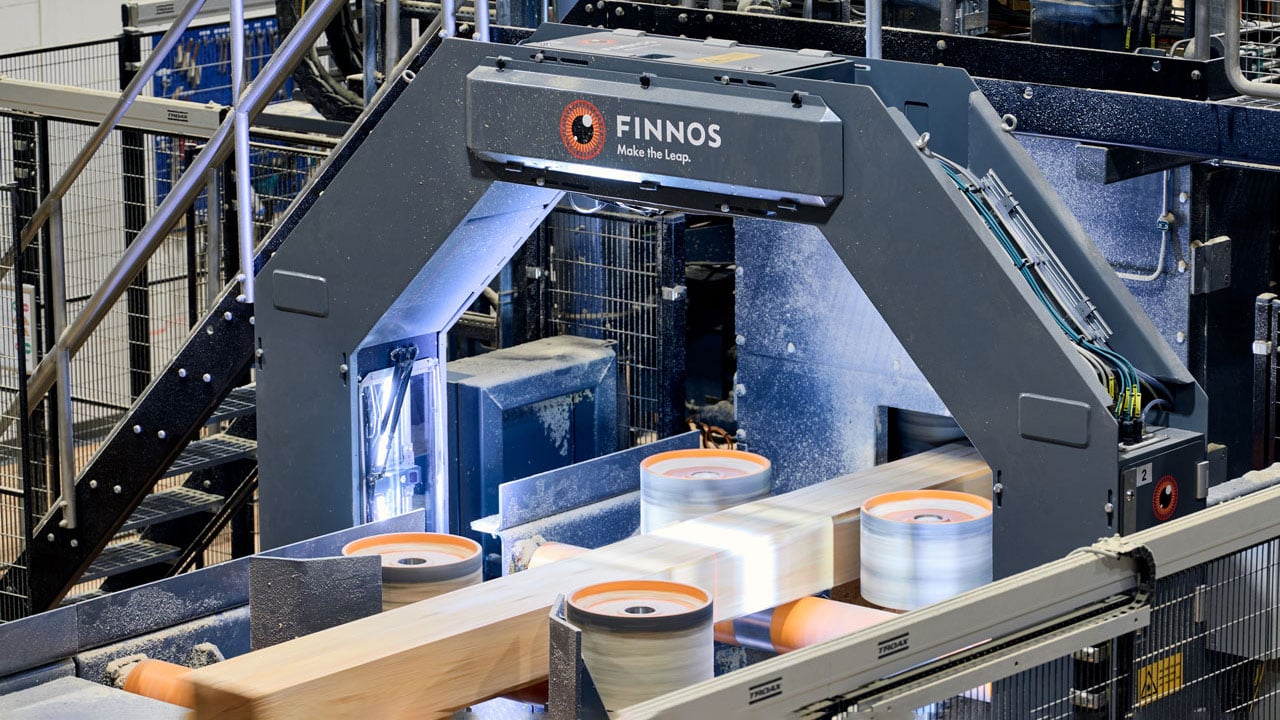Every day, a massive amount of data is generated at Metsä Fibre’s production plants. In addition to simulator programs and mathematical methods, we use artificial intelligence (AI) to analyse this data. AI enables more accurate and faster decisionmaking in production optimisation, for example.
Simulator program optimises log cutting
Metsä Fibre receives its wood raw material from Metsä Group’s wood procurement that uses a simulator program to forecast and guide the wood procurement process. This helps to optimise the processes and ensures that the sawn timber refined from the wood raw material meets the customers’ needs as far as possible.
“In practice this means that we can take our customers’ final product requirements into account right from the harvesting site,” says Veli-Matti Mäki, Development Manager at Metsä Fibre.
Digital twin helps predict process development
Metsä Fibre’s modern mills are pioneers in data collection and use. For example, the Äänekoski bioproduct mill generates 37,000 pieces of measurement data every second. Data is collected on pulp flow, pH, temperature and other factors that affect pulp quality. The process data can be used to adjust the pressure or flow rate, or the amount of chemicals fed into the process, for example.
A more advanced use of data is a digital twin – a virtual copy of the physical process – that enables smart process prediction and optimisation.
“Thanks to the digital twin, operators can predict how a process will develop over the next three hours with the current settings. This information helps them adjust the settings to minimise deviations, allowing us to provide our customers with consistent quality pulp,” says Matti Toivonen, VP, Process Technology at Metsä Fibre.
AI uses measurement data from sawing
Technological innovations, such as self-learning AI, support more cost-efficient production at the Rauma sawmill. AI analyses the measurement data and recommends the best possible sawing method.
“AI allows us to combine data generated by several measuring instruments, compile it in one place and use it to optimise production and logs,” says Jarkko Vihervuori, Senior Development Manager at Metsä Fibre’s Rauma sawmill. “From the customer’s perspective, this is important because we can now more precisely allocate the desired logs to the specific end product,” says Vihervuori.

Algorithms support sawn timber production and sale
Metsä Fibre uses linear multivariable optimisation for calculations on wood supply, production and demand data to optimize the use of raw material and production efficiency.
“When we understand customer demand better, we can focus on producing products that meet the actual customer demand,” says Mäki.
More efficient use of data supports both customer satisfaction and environmental responsibility, thereby strengthening the competitiveness of Metsä Fibre and its customers.
This article was originally published in Fibre Magazine issue 2025.
